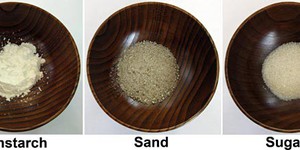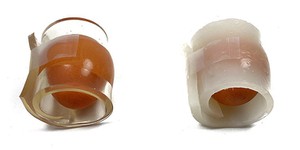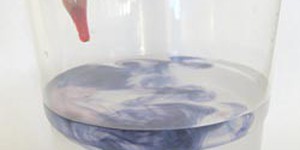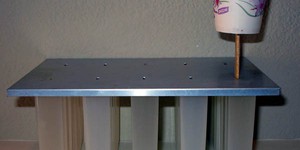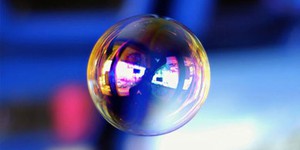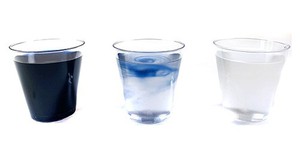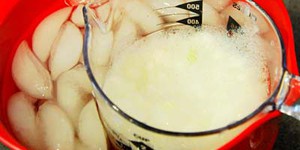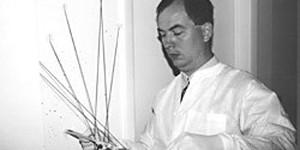Others Like “Experiment with Making Gels” (top 20 results)
|
Have you ever wondered why some things disappear when they are put in water but other things do not? For example, you may have seen that salt disappears, or dissolves, when it is mixed in a glass of water. But when you throw a rock in a stream it will not usually dissolve, and instead it will just sink to the bottom. And then there are some things that do not act like the salt or the rock. These are called colloids. If you have made Oobleck out of cornstarch and water, then you have seen…
Read more
Many foods, such as fresh fruits, vegetables, or eggs, are packaged in plastic to protect them from damage during handling and transport. But is plastic the best choice? What if a more sustainable and biodegradable material could replace it? Researchers have begun exploring hydrogels—squishy materials that can hold a lot of water—as alternative packaging materials. In this science project, you will make your own hydrogels from gelatin and cornstarch and investigate what ratio of…
Read more
Have you ever noticed that the salt you are using says it is "iodized"?
Iodine is an important micronutrient, which means we need it in small quantities to be healthy. Because iodine is rare in many people's normal diets, it is added to table salt. Then when people salt their food, they are also adding this important micronutrient. In this food science project, you will use some kitchen-friendly chemistry to investigate which types of salt have iodine added (in the form of iodide) and which do…
Read more
Gelatin! It's hard to think of another food that is used as frequently on the dinner table as off. You can find it in all sorts of sweet foods, from ice cream, yogurt, and gummy bears, to marshmallows and yellow colorings for sodas. Off the table, it shows up in glues, photographic paper, playing cards, crepe paper, medicine capsules, hair gels, and professional lighting equipment. From the kitchen to the theater—what a range of uses! In this cooking and food science fair project, you'll…
Read more
Making your own bubble solution is fun, but sometimes the bubbles don't seem to work as well as the solutions you buy in the store. In this experiment you can test if adding corn syrup or glycerin to your bubble solution will make it just as good as the stuff you can buy. This experiment will have you blowing bubbles!
Read more
The iodine clock reaction is a favorite demonstration reaction in chemistry classes that usually requires toxic or hazardous chemicals. During the reaction, two clear liquids are mixed, resulting in another clear liquid. After some time, the solution suddenly turns dark blue. The reaction is called a clock reaction because the amount of time that elapses before the solution turns blue depends on the concentrations of the starting chemicals. In this green chemistry project, you will use a…
Read more
Many disposable diapers contain a polymer, called sodium acrylate, which is useful for absorbing water. Do background research to learn about sodium acrylate, and how it reacts with water. Make sure that you understand the terms hydrophilic, polarity, hydrogel and hydrogen bonding. Cut out the middle, padded section of a disposable diaper. Cut this into equally-sized square pieces, approximately 10-12 cm on a side. Remove some of the stuffing material so that you can staple the open…
Read more
Which type of orange juice has the most vitamin C? In this science project, you will learn how to measure the amount of vitamin C in a solution using an iodine titration method. You will compare the amount of vitamin C in three different types of orange juice: homemade, premium not-from-concentrate, and orange juice made from frozen concentrate. Which do you think will have the most vitamin C?
Read more
In this project, you'll learn how to isolate DNA from onion cells, separating it from other cellular components in a manner that still preserves its structure and sequence. In the end, you'll have enough DNA to see with the unaided eye, and you'll be able to spool it to demonstrate its strand-like structure.
Read more
Every criminal leaves behind evidence at the crime scene. The trick to catching the criminal is collecting all of the evidence and making sense of it. This is what the forensic expert does. In this science project you will be correlating the size of blood stains to the distance they fell, but do not get too grossed out. You will be doing it with fake blood. If you like figuring out mysteries, this is the science project for you!
Read more
|
Explore Our Science Videos
Explore Enzyme Activity with Toothpicks
Maglev Train Assembly Instructions
Explore the Wet Sand Effect – STEM activity

